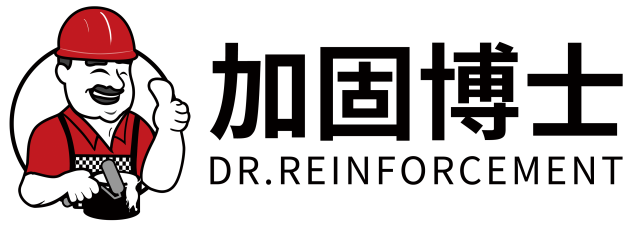Aerospace & Defense Innovations
1. Aircraft Wing and Fuselage Reinforcement
Carbon fiber cloth plays a major role in strengthening airplane wings and fuselages because of its amazing strength compared to its weight. The stuff is actually about five times stronger than steel but weighs much less, making planes both tougher and lighter at the same time. Look at what companies like Boeing and Airbus have been doing lately – they've managed to cut down on weight by around half and boost fuel efficiency by roughly 30% thanks to their work with carbon fiber materials. These improvements haven't just changed how planes are built, they've helped reduce fuel burn and lower emissions too. Plus, when mixed into composite materials, carbon fiber stands up better to environmental wear and tear. Aircraft parts made this way resist corrosion and hold up under repeated stress from takeoffs, landings, and exposure to all sorts of weather conditions without breaking down as quickly as traditional materials would.
2. Missile System Component Fabrication
Carbon fiber cloth has completely changed how missiles are built, making it possible to create precise parts while keeping weight down something really important for modern defense tech. When manufacturers add carbon fiber into their designs, they get better radar absorbing properties too, so missiles can stay hidden from enemy detection systems much longer. The fact that carbon fiber doesn't weigh much means engines work better and missiles can change direction faster something that matters a lot when following military specs. Before anything gets approved for actual use, there's tons of testing involved to make sure everything meets those tough requirements. All this attention to detail shows why precision matters so much in building weapons systems today. Carbon fiber isn't just some fancy material it's become pretty much standard across the industry for creating complex weapons that perform at top levels.
Automotive & Transportation Solutions
Lightweight Vehicle Body Panels
Adding carbon fiber cloth to car body panels cuts down weight substantially, which means better gas mileage overall. Tests show cars made with carbon fiber instead of regular materials can save around 20% on fuel costs. With more automakers jumping into electric vehicle production these days, there's growing interest in lightweight stuff like carbon fiber. This material plays an important role in what's coming next for transportation tech. The reason? Its amazing strength while being so light allows car makers to build EVs that go further between charges without sacrificing safety or durability.
High-Performance Braking Systems
Braking systems that incorporate carbon fiber cloth deliver much better heat resistance and improved performance characteristics, which is why they're becoming standard equipment in serious performance cars these days. The brake discs made from carbon fiber have several benefits compared to what was used before. They weigh less, so there's less unsprung mass affecting handling, and they last longer too. Most automotive engineers agree that carbon fiber is going to be a game changer for performance vehicles moving forward. These brakes make cars more efficient overall while making critical parts last longer. Drivers notice quicker responses when stopping at speed, and the system handles heat buildup much better than conventional materials can manage during those intense driving conditions.
Civil Engineering Reinforcement Techniques
5. Seismic Retrofitting for Buildings
Carbon fiber cloth really makes a difference when it comes to strengthening buildings, particularly in areas where earthquakes are common. What sets carbon fiber apart is how flexible yet strong it actually is, which explains why so many experts recommend it for retrofitting against seismic forces. Some research suggests that when buildings get reinforced with carbon fiber materials, they tend to hold up about 40% better during quake events. Of course, no one wants to rely solely on numbers, but this kind of improvement does matter for actual structural performance. We see this applied all over the place, especially with older buildings needing upgrades to pass current safety codes. Take California for instance, where plenty of structures have had carbon fiber added to their frames after major tremors hit. Case studies from San Francisco Bay Area show exactly how effective these retrofits can be in practice. When engineers decide to work carbon fiber into building designs, they're basically targeting weak spots and cutting down on potential damage risks during those unpredictable earthquake moments.
6. Bridge Load-Bearing Upgrades
Using carbon fiber in bridge construction is changing how we think about load bearing and making structures last longer. The material has this amazing strength while being super light, which makes it great for strengthening bridges. When added to existing structures, it helps spread weight better and takes pressure off older parts that might be failing. Research shows these carbon fiber reinforced bridges actually hold up much better over time than those with traditional steel reinforcements. Most engineers who've worked with carbon fiber report seeing real improvements in what bridges can handle before needing repairs. Take the recent highway overpass project in Chicago for example they used carbon fiber wraps extensively and saw dramatic results. Civil engineers looking to upgrade aging infrastructure are increasingly turning to carbon fiber solutions because it allows bridges to withstand heavier traffic volumes and larger vehicles without compromising safety standards. This approach isn't just innovative it's becoming necessary as our transportation networks face constant strain from growing populations and heavier freight loads.
Renewable Energy Infrastructure Applications
7. Wind Turbine Blade Construction
When it comes to renewable energy solutions, adding carbon fiber cloth to wind turbine blades offers some real benefits. These massive structures face all sorts of tough weather out there on the open plains and coastal areas. Blades made with carbon fiber reinforcement last much longer than traditional materials because they handle extreme forces without breaking down. The result? More electricity generated over time. Some field tests show around a 15% boost in power generation thanks to better airflow control across the blade surface. Plus, since these blades don't wear out as fast, companies spend less money fixing damage from storms or regular wear and tear. For wind farm operators looking to maximize returns while minimizing downtime, this material upgrade makes good economic sense in the long run.
Carbon fiber cloth helps extend how long wind turbine blades last before needing replacement, plus it cuts down on time lost during maintenance checks. This means wind farms produce electricity more consistently day after day. With fewer interruptions, these facilities actually hit their monthly energy goals more often than traditional setups. The financial benefits are pretty clear too since operators see better returns when their turbines run smoothly for longer periods. And this practical advantage is helping push wind energy forward worldwide as companies look for reliable renewable options they can count on year round.
8. Solar Panel Support Structures
Carbon fiber fabric has become a game changer when designing supports for solar panels. These structures stay light on their feet but still pack serious strength where it matters most. What makes carbon fiber stand out? Well, unlike those old metal frames that start corroding after just a few years outside, carbon doesn't break down so easily in harsh weather conditions. Rain, snow, extreme heat – none of these factors seem to bother carbon fiber much at all. Because these materials last so long without needing repair work, solar farms can cut back significantly on replacement costs and downtime. For companies looking to build lasting renewable energy solutions, this kind of durability represents a major plus point in both economic and environmental terms.
The lightweight nature of carbon fiber means less carbon gets released during transport and setup operations. What makes this material even better for sustainability? It can actually be recycled multiple times without losing structural integrity, which gives it an edge over many traditional materials. When manufacturers start incorporating carbon fiber into solar panel mounting structures, they're not just cutting down on waste but also helping buildings meet green building standards while still getting good performance from their panels. We're seeing this material make a real difference in how efficient solar installations become, especially as companies look to scale up their renewable energy capacity across different regions and climates.
Marine & Industrial Manufacturing Breakthroughs
9. Corrosion-Resistant Ship Hulls
Ship hulls built with carbon fiber cloth stand up much better against the wear and tear of ocean conditions, resisting damage from saltwater corrosion that typically eats away at traditional materials. Research shows ships with carbon fiber reinforcement need far less frequent repairs and can last decades longer than conventional vessels. The reason? Carbon fiber just doesn't corrode like metal does, making it ideal for boats that spend their entire lives battling seawater. Shipbuilders have also made some impressive advances recently, creating hulls that maintain their strength while actually weighing less than older models. This means ships go faster, burn less fuel, and generally perform better across all sorts of maritime operations. As more shipyards adopt this technology, we're seeing real improvements in how long ships stay seaworthy before needing major overhauls.
10. Industrial Robotic Arm Components
Carbon fiber cloth has become essential in modern industrial manufacturing, especially when it comes to making robotic arms better at what they do. When manufacturers swap out heavy metals for this super light material, they notice real differences in how their robots perform. The lighter weight means robotic components can move faster without sacrificing accuracy. Many factories have seen this firsthand after switching from steel or aluminum parts to carbon fiber alternatives. For instance, automotive assembly lines now complete tasks quicker while maintaining tight tolerances. Energy savings are another plus since lighter robots require less power to operate. Across different sectors like aerospace and electronics production, companies report not just faster operations but also fewer errors in their manufacturing processes. As industries continue to adopt these carbon fiber innovations, we're seeing smarter, more efficient automation systems take shape on factory floors around the world.


